Self-Drilling Pipe Umbrella vs. Advance Small-Diameter Pipes in Tunnel Support
Time:2025-11-15From:sinorock View:
In tunnel engineering, mine roadways, and various underground space development projects, ensuring the stability of the excavation face is a top priority for construction safety. To deal with weak and fractured ground, engineers often adopt pre-support technologies. Among them, the self-drilling pipe umbrella and advance small-diameter pipes are two widely used but often confused methods. Although they share the same goal—reinforcing the ground before excavation—their working mechanisms, construction efficiency, and applicable conditions differ significantly. This article systematically explains the differences between the two from aspects such as definitions, construction principles, applicable conditions, advantages and disadvantages, and real engineering comparisons, helping engineering professionals make scientific selections.
1. What Are Advance Small-Diameter Pipes?
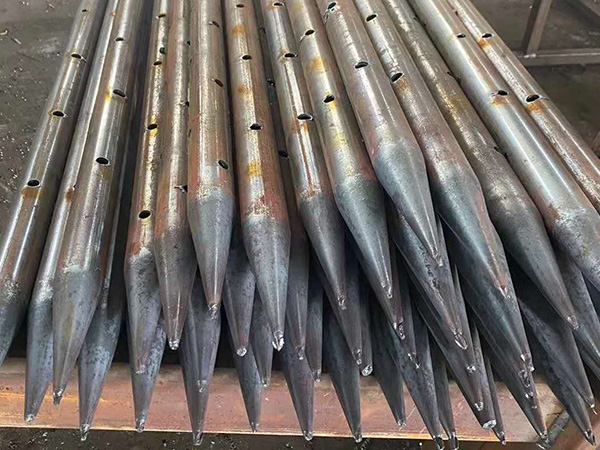
Advance small-diameter pipes are a traditional and economical pre-support method. They typically use small-diameter steel pipes (such as Φ42 mm or Φ48 mm), with the front end shaped into a tapered tip for easier penetration.
Working Principle and Construction Process
Installation: Prefabricated advance small-diameter pipes are inserted into the drilled holes.
Grouting: Cement grout or chemical grout is injected into surrounding soil or rock through grout holes on the pipe. After hardening, the grout forms a supporting arch.
Key Characteristics
Applicable Ground: Mainly used in soils or fractured rock with some self-stability.
Advantages: Low cost, mature technology, simple construction.
Disadvantages: In very loose or water-rich formations, hole formation is difficult, collapse is common, and the pipe cannot be installed properly, resulting in low efficiency.
2. What Is a Self-Drilling Pipe Umbrella?

The self-drilling pipe umbrella is a major upgrade to traditional advance small-diameter pipe technology. It integrates the functions of drill rod, pipe, and grout channel. Its core component is the hollow anchor rod (self-drilling anchor rod), which has full-length threads and a drill bit.
Working Principle and Construction Process
Grouting: After drilling, grout is injected through the central hole of the hollow rod. The grout flows out through the bit and fills the gap between the rod and the borehole wall, forming a dense grout envelope.
Key Characteristics
Applicable Ground: Designed specifically for running sand, silt, cobble layers, and other highly unstable, easily collapsing formations.
Advantages: High success rate, fast construction, good support performance, and improved corrosion resistance due to grout encapsulation.
Disadvantages: Higher material cost and greater technical requirements.
3. Case Study

In a metro tunnel project, the original design used advance small-diameter pipes. The construction section mainly passed through Quaternary cobble layers and Tertiary highly weathered conglomerate. The cobble layer had large particle size, high content, and good cementation. When the tunnel excavation entered the full-face conglomerate layer, the traditional advance small-diameter pipes could not penetrate the hard rock effectively, causing grouting difficulties and preventing the formation of a continuous reinforcement arch. Meanwhile, multiple continuous water inflows appeared at the excavation face, severely affecting construction safety and progress.
3.1 Solution
After comparison of multiple options and field trials, self-drilling hollow anchor rods were adopted to replace the original design. Specifically, R25 (3 m) and R32 (5 m) self-drilling anchor rods were used together with a cement–water glass two-component grout system. A uniform and dense reinforcement layer with a thickness of 1.5 m was successfully constructed within a 140° range of the tunnel vault, achieving dual goals of ground reinforcement and water control.
3.2 Performance Comparison
Significant Improvement in Reinforcement
Self-drilling anchor system: reinforcement thickness 1.5 m
Reinforcement range increased by 50%, improving bearing capacity
Water Inflow Significantly Improved
With self-drilling anchors: excavation face remained dry, water inflow completely controlled
Notable Settlement Control
Advance small-diameter pipes:
Stabilized cumulative settlement: 8–9 mm
Maximum settlement: 12 mm
Self-drilling anchors:
Stabilized cumulative settlement: 6–7 mm
Maximum settlement: 9 mm
Settlement control improved by about 40%, significantly enhancing construction safety.
3.3 Case Insights
This case fully demonstrates the adaptability and reliability of self-drilling anchor technology in complex geological conditions. Its integrated drilling–support–grouting process effectively solves the technical bottleneck of traditional advance small-diameter pipes and provides valuable experience for similar tunnel projects.
4. How to Make the Right Choice?

Choosing between a self-drilling pipe umbrella and advance small-diameter pipes is not a simple cost comparison but a comprehensive decision based on geology and project requirements.
Choose Advance Small-Diameter Pipes When:
Ground conditions are relatively stable and collapse is unlikely
Project budget is tight
Construction schedule is flexible
Choose Self-Drilling Pipe Umbrella When:
High safety and schedule requirements leave no room for collapse risks
A more durable and higher-quality support structure is needed
5. Conclusion
Both methods have their advantages: the self-drilling pipe umbrella excels in efficient construction and strong support, while advance small-diameter pipes offer cost-effectiveness and flexibility. In real projects, decisions should be based on geological conditions, schedule requirements, and budget. Understanding their fundamental differences is crucial for engineers to design safe, economical, and efficient tunnel support solutions.
latest news
-
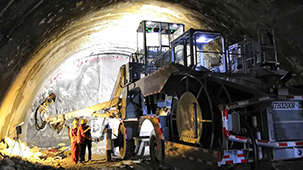
- Self-Drilling Pipe Umbrella vs. Advance Small-Diameter Pipes in Tunnel Support
- Time:2025-11-15From:This Site
- Compare self-drilling pipe umbrellas and advance small-diameter pipes in tunnel support. Learn their working principles, advantages, limitations, and real-world applications to choose the most effective pre-support solution for safe and efficient underground construction.
- View details
-
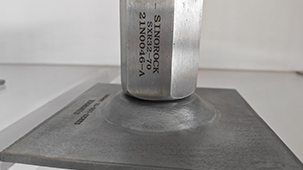
- How to Choose Stainless Steel Self-Drilling Anchor Bolts: A Complete Selection Guide
- Time:2025-11-12From:This Site
- Learn how to choose the right stainless steel self-drilling anchor bolts for tunneling and mining projects. Compare 304, 316L, and 2205 grades for durability and cost-efficiency.
- View details
-
.jpg)
- Common Failures For Hollow Anchor Bar Tunnel Construction
- Time:2025-10-28From:This Site
- Common failures in hollow anchor bar tunnel construction: causes, solutions, and Sinorock’s self-drilling bolt technology for safer tunnels.
- View details
-
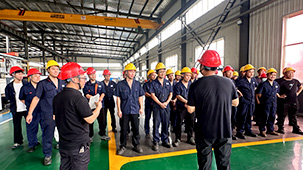
- Sinorock 2025 Quality Month | Strengthening Quality Foundations, Empowering Product Excellence
- Time:2025-08-13From:This Site
- Sinorock’s 2025 Quality Month, themed “Strengthening Quality Foundations, Empowering Product Excellence,” successfully concluded, reinforcing our commitment to superior product quality.
- View details
-
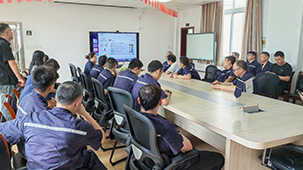
- Sinorock Safety Month 2025 | Everyone Speaks Safety, Everyone Can Respond
- Time:2025-07-03From:This Site
- Sinorock Safety Month 2025, centered on the theme "Everyone Speaks Safety, Everyone Can Respond - Spot Workplace Hazards," has wrapped up successfully!
- View details
-
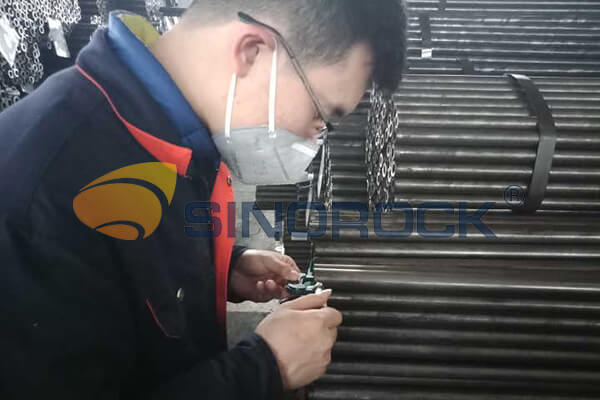
- Quality Control: the Vital Factor of A SDA Bolt Factory
- Time:2025-01-09From:This Site
- Sinorock’s comprehensive quality control system, from supplier management to outgoing inspections, ensuring the highest standards for self-drilling anchor bolts in construction.
- View details
-

- SINOROCK to Showcase Innovative Mining Solutions at Mining and Metals Central Asia 2025
- Time:2025-09-09From:This Site
- We are pleased to share that SINOROCK will participate in the Mining and Metals Central Asia 2025, taking place from September 17 to 19 at the Atakent International Exhibition Centre in Almaty, Kazakhstan. You can find us at Booth 11-231.
- View details
-

- Sinorock Invites You to Explore Proven Self-Drilling Anchor Bolt Solutions at bauma 2025
- Time:2025-03-07From:This Site
- From April 7–13, 2025, explore Sinorock’s Self-drilling anchor bolt solution at Booth C2.513/4 in Hall C2 of the Messe München Exhibition Center (Munich, Germany).
- View details
-
.jpg)
- SINOROCK to Attend EXPOMINA PERÚ 2024 in Lima, Peru
- Time:2024-08-10From:This Site
- Sinorock to Attend EXPOMINA PERÚ 2024 in Lima, Peru
- View details
 Download
Download 


